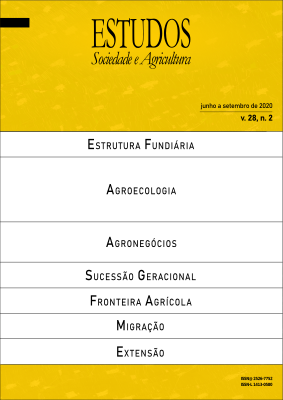Paternal strategies for maintaining generational succession in rural properties
Estratégias paternas para a manutenção da sucessão geracional em propriedades rurais
DOI:
https://doi.org/10.36920/esa-v28n2-7Abstract
This article aims to discuss the internal aspects of families and the properties that motivate succession, more specifically the strategies launched by the parents to motivate their children to remain on the properties and in the family businesses. The study was carried out in the municipality of Cruz Alta, state of Rio Grande do Sul, through semi-structured interviews with 31 rural producers. Considering the results of the strategies promoted by the parents, it is possible to verify the existence of six types of strategies: 1) strategy related to occupation; 2) strategies of autonomy; 3) new investment strategy; 4) provision of opportunities for study strategy; 5) strategy of urban occupation and 6) strategy of donation of assets. The strategies outlined above reveal that the generational succession loses the character of a natural process as it was in past generations when the children remained on the property through moral obligation, for love of the land and to maintain the family collectivityand the reproduction of the patrimony throughout generations. Today, the farmers interviewed demonstrate that succession among the children needs to be motivated. This condition shows that parents are concerned about maintaining business and equity and make an effort to enable or maintain this process.
Keywords: material and symbolic goods; maintenance of business and equity; generational succession.
Article received on October 30, 2019. Accepted on April 10, 2020.
How to cite
MOREIRA, Sandro da Luz ; SPANEVELLO, Rosani Marisa; BOSCARDIN, Mariele; LAGO, Adriano. Estratégias paternas para a manutenção da sucessão geracional em propriedades rurais. Estudos Sociedade e Agricultura, Rio de Janeiro, v. 28, n. 2, p. 413-433, jun. 2020.
Downloads
Downloads
Published
Issue
Section
License
Copyright (c) 2020 Sandro da Luz Moreira, Rosani Marisa Spanevello, Mariele Boscardin, Adriano Lago

This work is licensed under a Creative Commons Attribution 4.0 International License.
Authors who publish in this journal agree to the following terms:
a) Authors maintain the copyright and grant the journal the right of first publication, with the work simultaneously licensed under the Creative Commons Attribution License which allows the sharing of the work with acknowledgment of authorship and initial publication in this journal.
b) Authors are authorized to take additional contracts separately, for non-exclusive distribution of the version of the work published in this journal (eg publish in institutional repository or as a book chapter), with acknowledgment of authorship and initial publication in this journal.
c) Authors are allowed and encouraged to publish and distribute their work online (eg in institutional repositories or on their personal page) at any point before or during the editorial process, as this can generate productive changes, as well as increase the impact and citation of published work (See The Effect of Free Access).






